QuestionI am doing some research on Anolis Carolinensis and have a couple of questions. How and why do these particular reptiles change colors? My understanding stops at the fact they have chromatophores. And secondly, do you know what sources I could use to investigate why this species is increasingly becoming rare after years of proliferation? Thanks so much for any information that could help.
AnswerHi Angel,
I have always read that the decline of the Green anole population coincided with the introduction of the more aggressive Brown anole (Anolis sagrei), likely from Cuba. Habitat loss is also a cited cause. Some species adapt well and even thrive with the changes in vegetation etc brought by humans while others do not.
Anoles change colour primarily in response to hormonal changes. There are several hormones at work but I believe epinephrine, cortisone and melano stimulating hormone (MSH) are the main ones. Some of the more common situations that trigger these hormonal changes are acute or chronic stress, sensing danger and visual communication between anoles.
There are different types of chromatophores that contain different pigments or produce colour by their structure (the way light is reflected off of them.) The pigment within these cells move, concentrating and dispersing, which is how the different colours are created as well as the combination or layering of the colours.
This is a very simplistic explanation but should give you an idea. The outermost layer of pigment containing cells in anoles are the xanthophores which produce yellow pigment. Below that are the iridophores. Iridophores produce blue colour through their internal structure rather then actual pigment. The combination of the yellow and blue create the usual green colour of anoles. Below the iridophores are the melanophores which produce black pigment. Stress induced hormones causes the black pigment in these cells to move upward and basically block the middle layer iridophores causing the anole to appear brown. The dewlap contains erythrophores which produce a red pigment.
The melanophores are responsible for the dark eyespot that anoles get when they are stressed. I read somewhere that male anoles will be less aggressive to another male that is displaying that spot so it plays a role in social communication. Something like a white flag of surrender I gather.
This article discusses a bit about the colour changes in response to stress in anoles.
http://icb.oxfordjournals.org/content/42/3/526.full
http://icb.oxfordjournals.org/content/42/3/526/T1.expansion.html

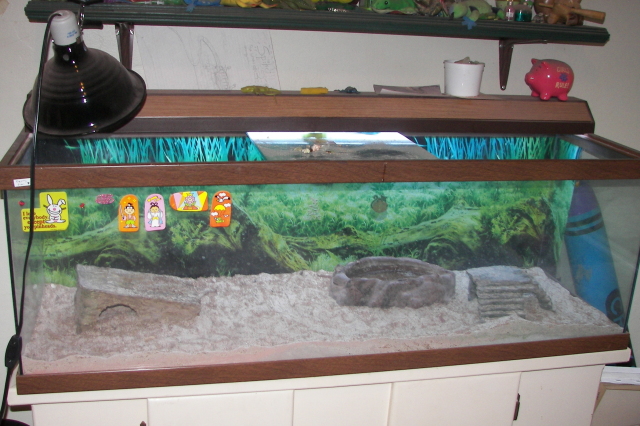 bloody mass hanging on the rectum of our bearded dragon
QuestionQUESTION: Hello Tracie,
Yesterday evening our d
bloody mass hanging on the rectum of our bearded dragon
QuestionQUESTION: Hello Tracie,
Yesterday evening our d
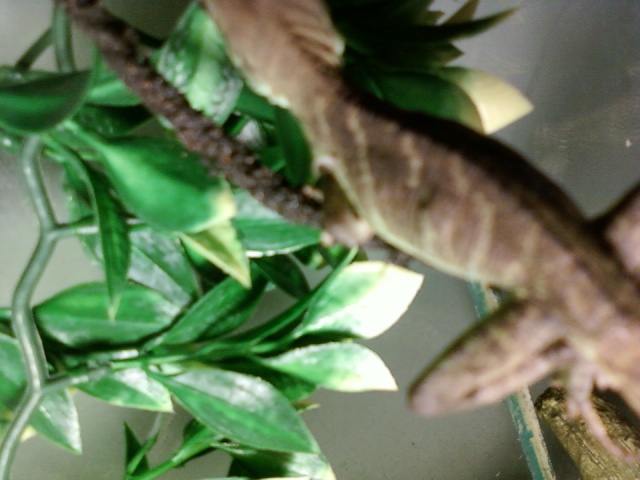 Chinese Water Dragon Broken Rib??
Question
Side Lump
Hi,
My fiance and I have a chinese w
Chinese Water Dragon Broken Rib??
Question
Side Lump
Hi,
My fiance and I have a chinese w
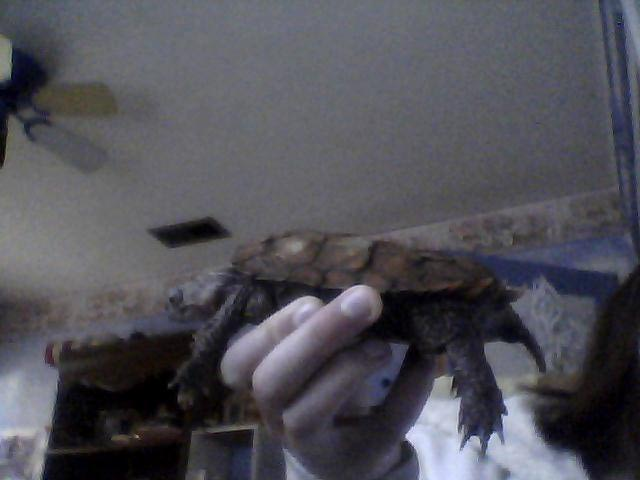 Mites On Turtle
Question
Bowseta My turtle
Today I saw that thei
Mites On Turtle
Question
Bowseta My turtle
Today I saw that thei
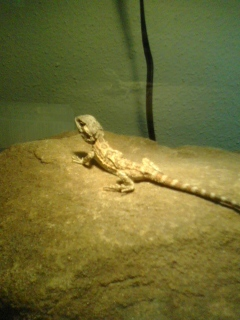 My baby bearded dragon wont eat...
QuestionSandfire
QUESTION: Hi there,
I just got
My baby bearded dragon wont eat...
QuestionSandfire
QUESTION: Hi there,
I just got
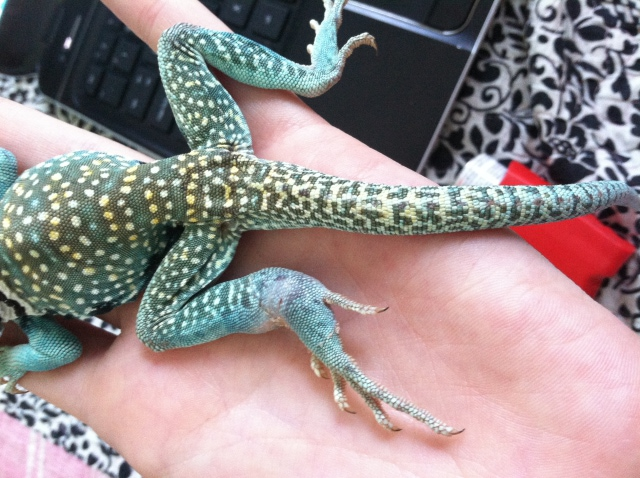 collared lizard swollen leg
QuestionQUESTION: Hi, I have a common collared lizard t
collared lizard swollen leg
QuestionQUESTION: Hi, I have a common collared lizard t